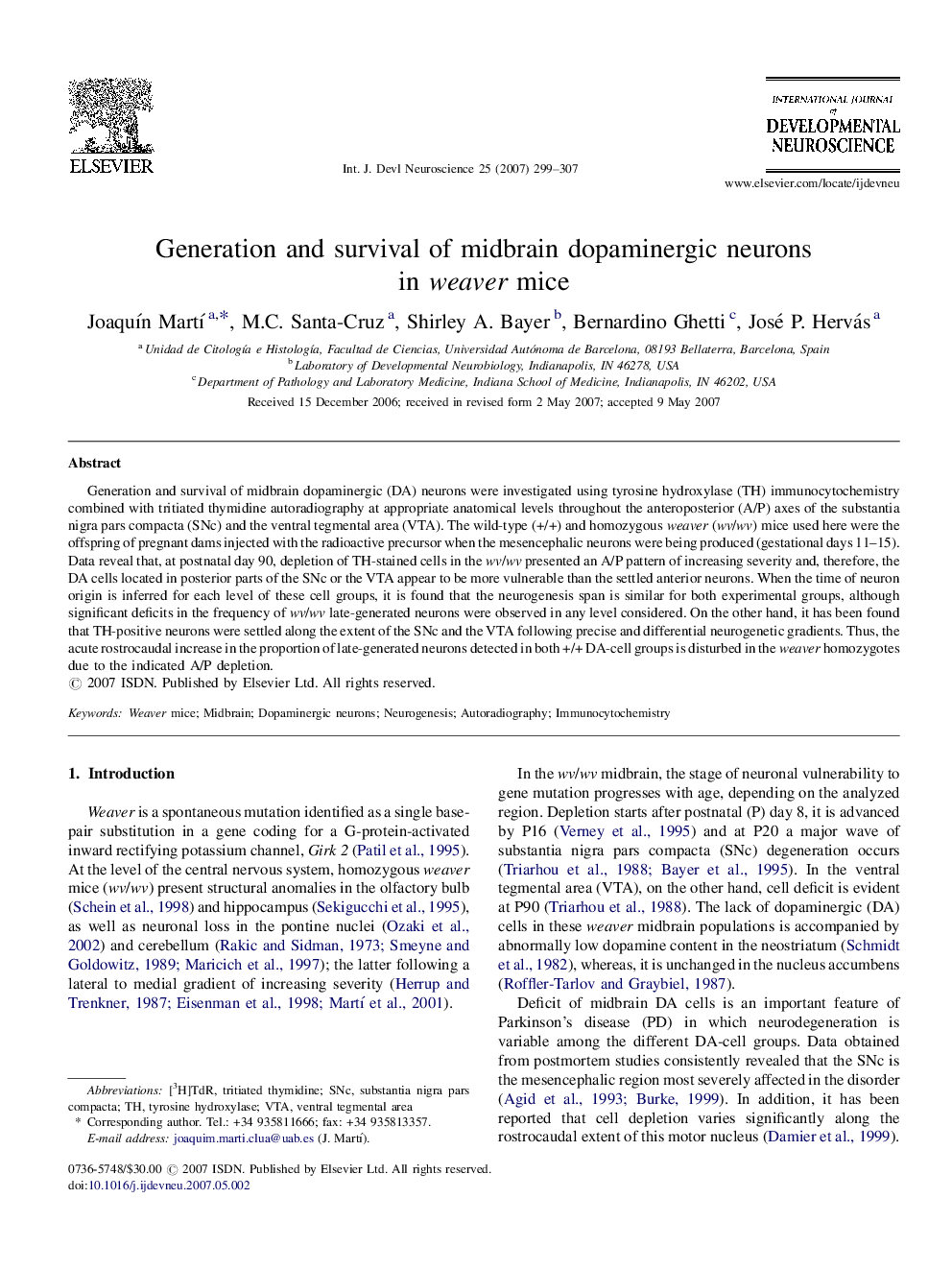| Article ID | Journal | Published Year | Pages | File Type |
|---|---|---|---|---|
| 2787081 | International Journal of Developmental Neuroscience | 2007 | 9 Pages |
Generation and survival of midbrain dopaminergic (DA) neurons were investigated using tyrosine hydroxylase (TH) immunocytochemistry combined with tritiated thymidine autoradiography at appropriate anatomical levels throughout the anteroposterior (A/P) axes of the substantia nigra pars compacta (SNc) and the ventral tegmental area (VTA). The wild-type (+/+) and homozygous weaver (wv/wv) mice used here were the offspring of pregnant dams injected with the radioactive precursor when the mesencephalic neurons were being produced (gestational days 11–15). Data reveal that, at postnatal day 90, depletion of TH-stained cells in the wv/wv presented an A/P pattern of increasing severity and, therefore, the DA cells located in posterior parts of the SNc or the VTA appear to be more vulnerable than the settled anterior neurons. When the time of neuron origin is inferred for each level of these cell groups, it is found that the neurogenesis span is similar for both experimental groups, although significant deficits in the frequency of wv/wv late-generated neurons were observed in any level considered. On the other hand, it has been found that TH-positive neurons were settled along the extent of the SNc and the VTA following precise and differential neurogenetic gradients. Thus, the acute rostrocaudal increase in the proportion of late-generated neurons detected in both +/+ DA-cell groups is disturbed in the weaver homozygotes due to the indicated A/P depletion.
